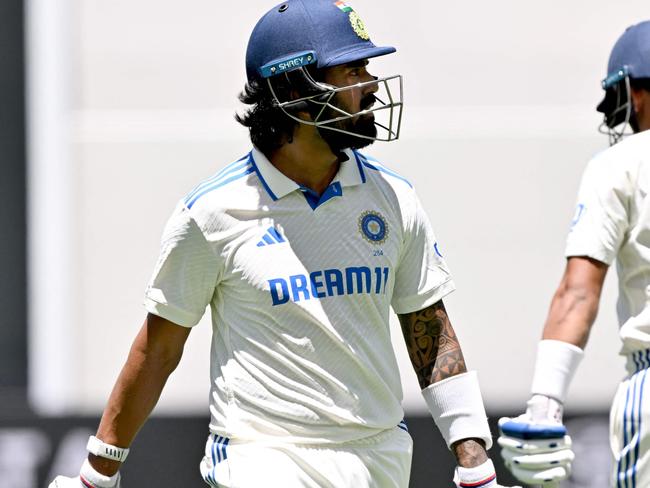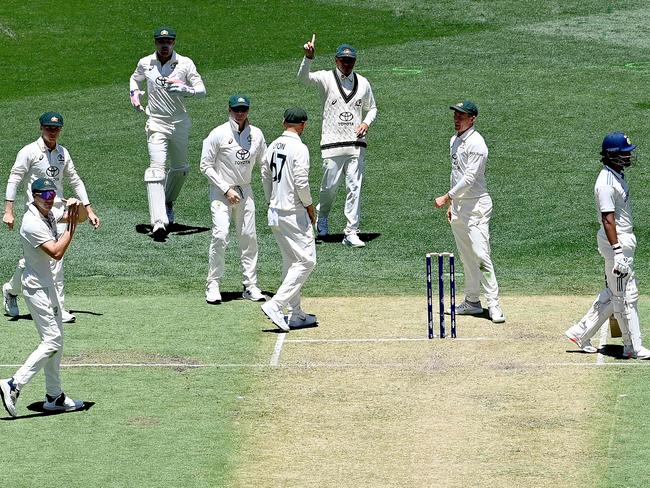Australia vs. India, First Test: Why the Hot Spot technology is not in use this summer, already causing controversy
Viewers of day one of the First Test between Australia and India will notice that a key component of the DRS technology they may have been use to in previous summers is missing and its omission has already courted controversy.
Fears over the inconsistency of Hot Spot melting down in hot weather have led Fox Cricket to drop the contentious technology from its coverage this summer.
Hot Spot’s infra-red cameras were originally drawn from the same technology used to blow up tanks in war time but it was never universally accepted and has now been detonated from Australia – the only place that used it.
India’s KL Rahul was controversially dismissed on DRS on day one exacerbating the visitor’s shocking collapse, leading to questions about why Hot Spot wasn’t available to be used in the adjudication process.

But Hot Spot is not part of the official judicial DRS process mandated by the International Cricket Council and Fox Cricket boss Steve Crawley strongly backed the decision by the host broadcaster to dump the expensive and unreliable technology which is not used anywhere else in the world.
“No one else in the world uses it. And there was constant criticism of it,” Crawley told this masthead.
“On hot days it didn’t work. The whole bat and everything out there was hot.
“Originally it was a Channel 9 thing. We continued it because we had the deal with the company. No one else in the world was using it and we wanted to move on.
“It wasn’t universally accepted. No one else in the world was using it and it wasn’t part of the (ICC’s) judicial system which we paid for anyway.
“We chose to use our money in other ways because of the criticisms of it – the fact some days it worked and some days it didn’t. So we’ve moved on.”
Fox Cricket has instead invested in innovations which they believe boost the entertainment value for viewers, with the ‘Halo’, camera technology which is used at the Olympics and Major League Baseball, as well as ‘The Emperor’ which is powered by 80 still cameras synchronised around the ground.
Meanwhile, the operator of Snicko technology Warren Brennan defended the controversial call to dismiss Rahul – saying the technology made the right call anyway.
Brennan, whose company BBG Sports operates the Real-Time Snicko system used for decision reviews told this masthead that: “I thought Snicko worked perfectly,” saying he believed the spike on Snicko lined up when the bat appeared to make contact with the ball.
Fox Cricket commentators Mike Hussey and Mark Waugh felt TV umpires should not have overturned the on-field umpire’s call of not out because the evidence wasn’t conclusive enough.
Former Indian batter Sanjay Manjrekar said on Star Sports that the call to give Rahul out had been a poor one.

“First of all, disappointed with what was provided to the TV umpire,” Manjrekar said.
“He should have got more evidence. Based on just a couple of angles, I don’t think such an important decision in the match should have been made. My point is, with the naked eye there’s only one certainty and that’s the pad being hit by the bat. It’s the only visual certainty we’ve got that with the naked eye. For everything else, you needed the aid of technology, which is Snicko.
“So ideally, if there was bat, as an edge to the ball, there should have been an earlier spike because clearly two events there, and the umpire obviously heard one noise. The visual certainty was bat hitting the pad. If that was the spike, then there wasn’t an outside edge. If we were shown two spikes, then you could say the first one was the bat. So it was a poor supply of technology to TV umpire, and he should have said he can’t nail it.”


